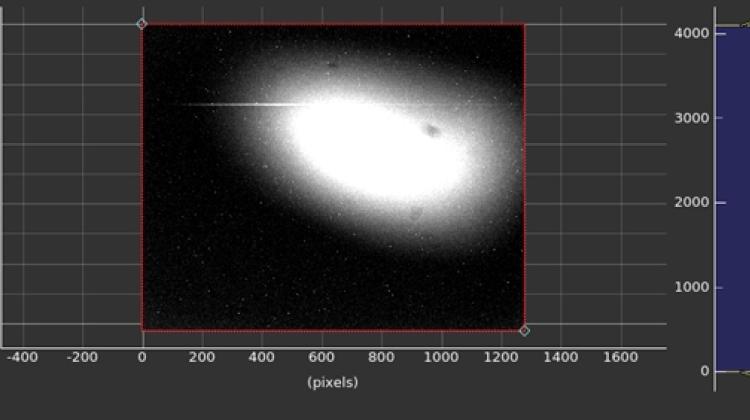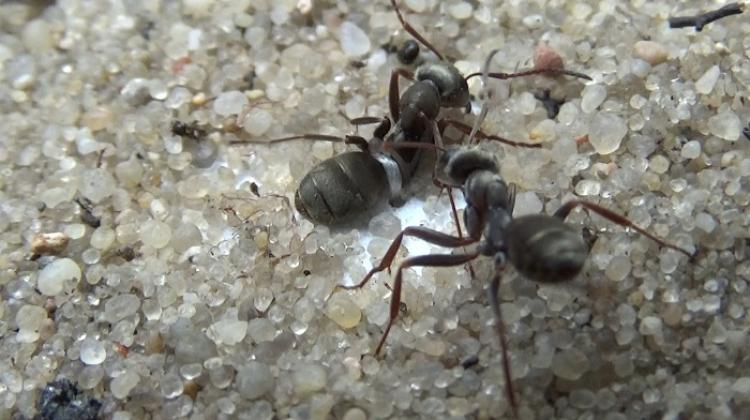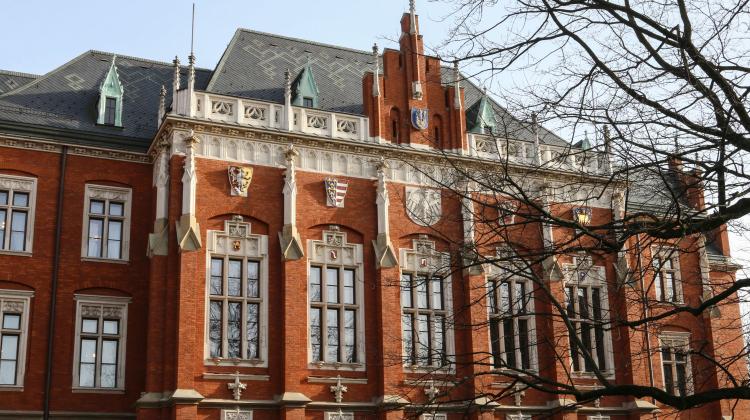Electrons in Solaris already gaining speed
 Photo: An image of the electron beam recorded by a fluorescence monitoring (YAG) just before entering the first accelerator structure.
Photo: An image of the electron beam recorded by a fluorescence monitoring (YAG) just before entering the first accelerator structure.
Building a particle accelerator is not a piece of cake. Scientists have to overcome many obstacles to obtain particles, accelerate them and guide their flight path. In Kraków Solaris synchrotron researchers are now working on making the electron beam pass exactly through the entire accelerator.
Poland\'s first synchrotron, a particle accelerator that emits electromagnetic radiation of high intensity, is being built in Kraków in the Third Campus of the Jagiellonian University. It is a multidisciplinary research unit, which will open up new opportunities for many fields of science, such as biology, chemistry, physics, materials science, medicine, pharmacology, geology and crystallography.
The first electrons have already been emitted in the unit. Now the Solaris synchrotron team is working on making the electron beam pass through the entire linear accelerator. Currently it is possible to observe an electron beam directly prior to entering the first accelerating structure, the linac. The electrons still need to travel nearly 40 meters to its end - according to the National Synchrotron Radiation Centre Solaris release sent to PAP.
"The beam emitted from RF Gun has 1.8 MeV energy. We are working on the correct synchronization of electromagnetic wave pulses in the linac with the electron beam emitted from RF Gun in order to further accelerate the electrons. We hope that in a week we can solve a number of problems and observe the beam on the end of the linac" - announces chief accelerator physicist at Solaris, Adrian Wawrzyniak.
At the end of the week, transfer line, accumulation ring and the linac integration will start. The purpose of the transfer line is to transport the electron beam from the linac to the synchrotron. During that time, all the work associated with the linac start-up will be stopped. Further electron beam experiments will be possible only in mid-April, after the assembly of the entire synchrotron is completed.
An important part of any synchrotron are research (experimental) lines. Two such lines are currently being built: PEEM/XAS and UARPES. Applications of the first line include physical chemistry of materials, nanomagnetism, surface reactions, biology and geology. The areas in which the second line can be used include the physics of superconductors and semiconductors, new electronic materials, low-dimensional materials and nanostructures.
"We recently received one of the most important and major components for the experimental line UARPES - undulator, an insertion device which is a source of synchrotron radiation. Undulator allows to obtain better parameters of the photon beam. Transportation of this device was extremely complicated. Not only because the device weighs over 8 tons, but also because it consists of a precision control mechanics for permanent magnet structure. The next challenge will be to install the undulator in the accumulation ring. We still have a lot of work to do before we reach the first light for research purposes. However, we are on the right track" - reads release of the National Synchrotron Radiation Centre Solaris.
Synchrotron Solaris will be the most advanced device of this type in Poland, generating electromagnetic radiation (from infrared to X-rays), whose unique properties allow to look into the matter and perform precise analyses. It will open new horizons in basic, applied and industrial research. The facility will allow for simultaneous research by several groups of specialists around the clock.
The project is funded by the European Regional Development Fund in the Innovative Economy Operational Programme 2007-2013.
PAP - Science and Scholarship in Poland
lt/ mki/ mrt/
tr. RL
Przed dodaniem komentarza prosimy o zapoznanie z Regulaminem forum serwisu Nauka w Polsce.


















